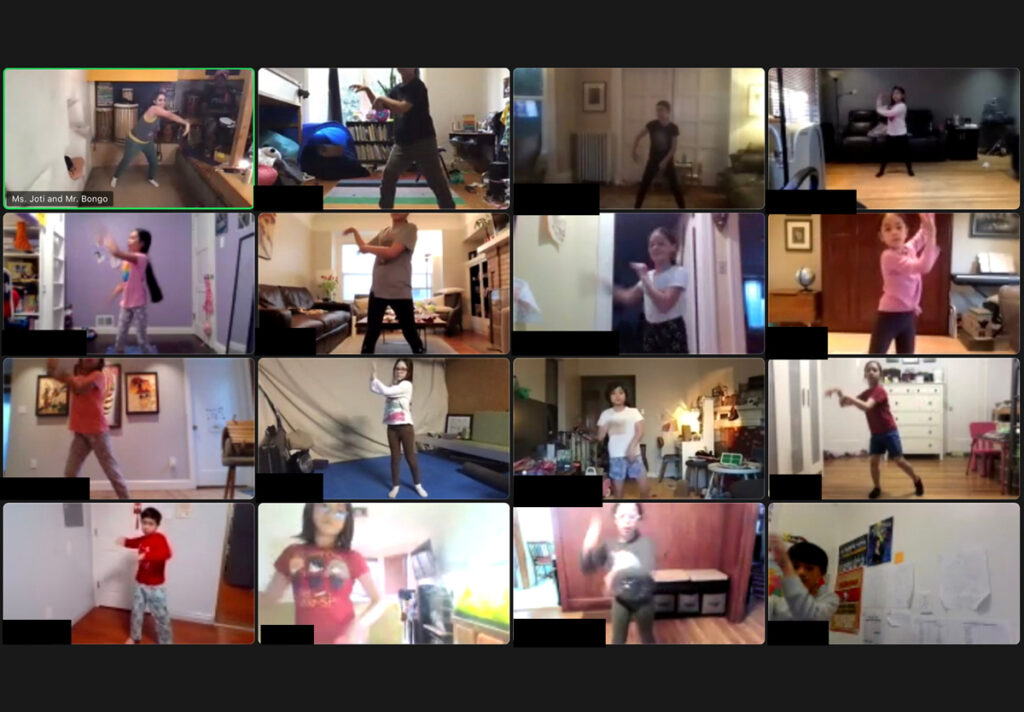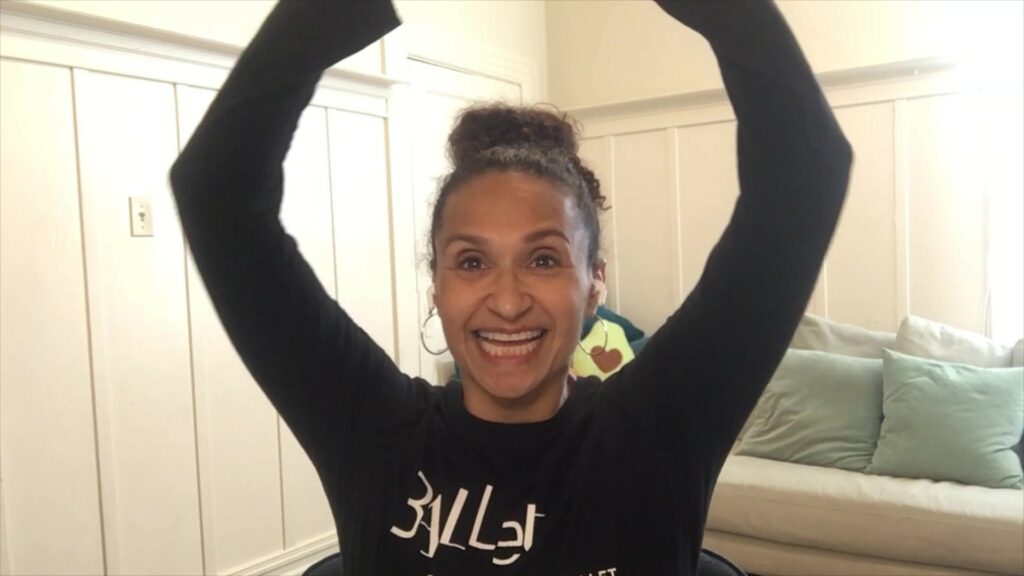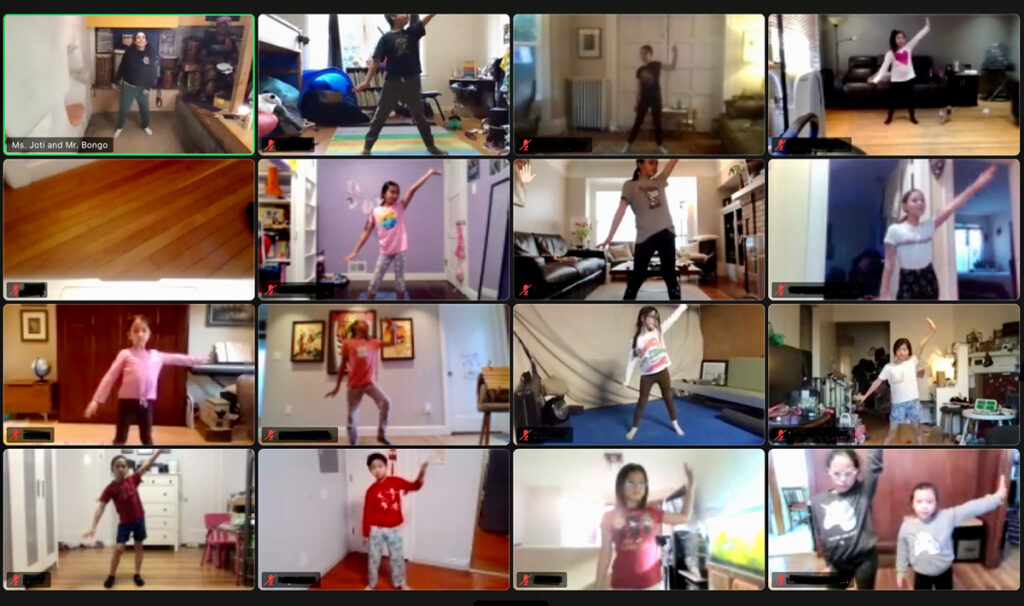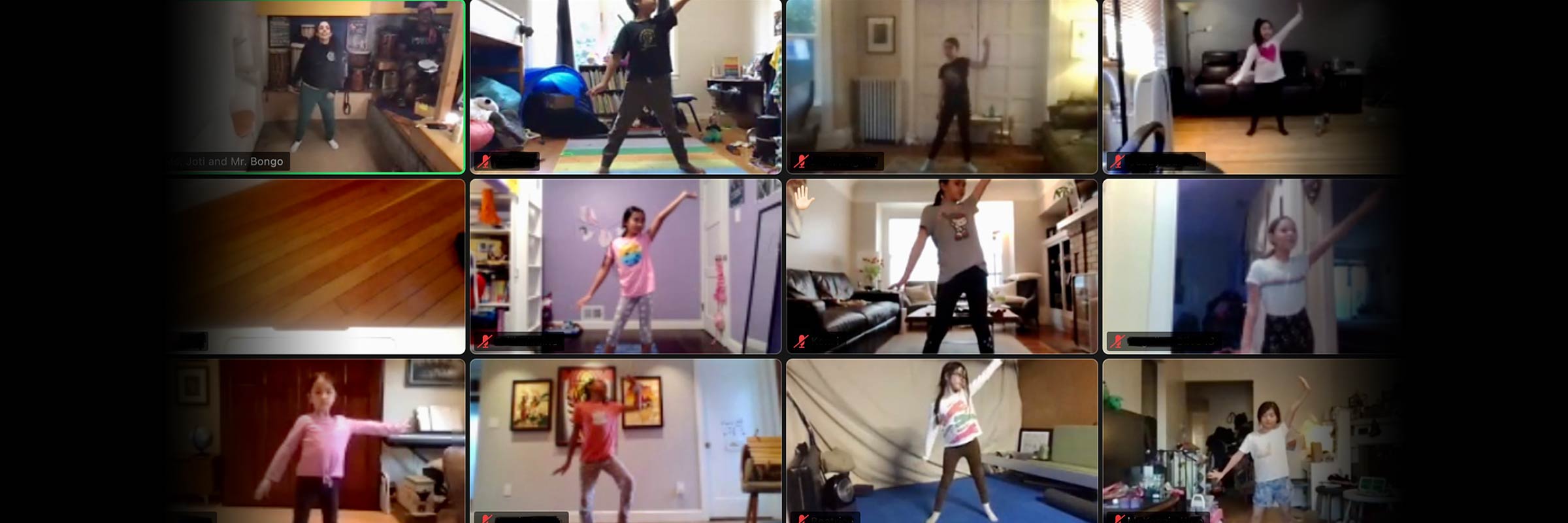DISC Keeps Kids Dancing Despite the Distance
Dance in Schools and Communities Adapts to Virtual Residencies
San Francisco Unified School District (SFUSD) schools remain closed, but SF Ballet’s Dance in Schools and Communities (DISC) program is keeping kids dancing and learning. It’s no secret that distance learning during the COVID-19 pandemic has been a challenge for both students and teachers. Fortunately, DISC has managed to pivot virtually.
DISC is one of the oldest dance-in-schools programs in the country. In a typical year, DISC classes reach 3,000 public school children with in-person dance classes with live music accompaniment. Due to the pandemic, SF Ballet’s DISC residencies have paused in middle and high schools, instead focusing on Pre-Kindergarten (Pre-K) through 3rd grades using the Zoom platform. The virtual residences are still reaching over 1,300 students and are serving 75% of the SFUSD schools DISC would typically serve in a normal school year.
In addition to teaching virtual residences, DISC Teaching Artists are also busy creating daily dance and music lessons for SFUSD’s educational television program SF Loves Learning, which has already reached over 150,000 students and their family members since the second season premiered in September. It’s all an impressive feat considering the unpredictability of the 2020–2021 school year.
So how do DISC residencies adapt to being behind screens? We talked to SFUSD teachers and a DISC Teaching Artist to learn more.

DISC Virtual Residencies
There’s a learning curve to teaching through the pandemic. DISC Teaching Artist Alisa Clayton, in her seventh year in the role, has found her stride. “I wasn’t sure if I could teach a meaningful dance class in 2D because dance is such a 3D experience,” she admits. “Could my students hear my voice? Could they see my movements well enough to connect to me and each other virtually? In our [in-person] classes, we have them leap, jump, and twirl across the floor, moving and creating shapes with their bodies . . . and that was no longer a possibility. But as my comfort with Zoom grew, so did my experimentation with that types of movement worked well and what didn’t work.”
One of Clayton’s strategies for Pre-K students over Zoom is show and tell. “We’ll dance with items they have in their homes like toys, blankets, hats, and even pets.” With 2nd and 3rd grade students, she says “they really like being surprised.” For example, “going from motion to complete stillness” or “[freezing] like their favorite superhero.”

Amanda Alef, Education Programs Manager at SF Ballet, credits DISC’s successful adaptation to distance learning to “being really flexible and putting the students and teachers first.” “This flexibility had trickled into every aspect of the program” from scheduling, to adjusting curriculum to be more socially and emotionally centered, to supporting DISC Teaching Artists as they adapted to dramatically different teaching practices.
While there’s consensus that dance learning is best in person, DISC virtual residencies offer some surprising benefits, too. Clayton highlights the chat functionality on Zoom, because students who aren’t comfortable using their voice can still participate. Ana Otero, Early Education Coordinator at the SFUSD Arts Department, points out that virtual residencies allow schools to partner with families in a new, organic way. She sees parents and siblings in the room moving with their students and connecting to their school day. It also gives kids a chance to engage with their families in something they may not do as a family otherwise.
DISC Keeps Growing
The 2020–2021 school year is the first full year of DISC residencies in Pre-K and Transitional Kindergarten (TK) classrooms. Serving these grades is part of an expansion following DISC’s 40th anniversary in 2020. Otero has been the SFUSD champion to launch the program across six different Pre-K sites. “At that age,” she says, “students are making so many connections to the world around them. They’re so physical. [DISC provides] a perfect opportunity to put those two things together. Movement is how they live.”
Otero is humbled by the flexibility and commitment to successfully holding Pre-K/TK DISC virtual residencies for the full school year. “Weirdly, relationships are still building even though it’s on Zoom. There’s evidence of caring and community developing around this program.”
“Weirdly, relationships are still building even though it’s on Zoom. There’s evidence of caring and community developing around this program.”
Alef shares the same sentiment. “Ultimately our main goals this year were to keep our team working and engaging with students in a live manner, maintain deep and long-lasting relationships with our partner schools, and continue providing important arts education opportunities for SFUSD students and teachers despite the distance. There’s been lots of twists and turns, but so far it’s been going better than we expected and has even been a ‘pandemic bright spot’ for many of the students and teachers we’ve been able to serve.”

The Impact of DISC
Whether in person or over Zoom, educators agree on the importance of students having the opportunity to move during their school days. Linda Tam, a teacher at Jean Parker Elementary School, says, “we want students to learn and build not only their minds but also their bodies.”
Students aren’t just learning dance, though. Otero explains that in DISC classes, students are accessing math skills like patterning and sequencing, and language and literacy skills by putting a movement to a word. “DISC teachers are creating opportunities for students to express who they are emotionally and socially,” she adds. “The classes give them so much agency. [Students] learn that how they think and what they create matters. It’s a big thing for kids.”
Teaching Artist Clayton reminds us that “we were all born movers.” In a particularly difficult year, DISC continues to offer an outlet for that, and it seems students and teachers alike are better off for it.
Header Image: SFB DISC Teaching Artists Joti Singh and Bongo Sidibe lead a virtual dance class for SFUSD students in SF Ballet School’s Community Scholarship Program // © San Francisco Ballet








